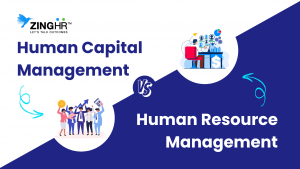Human Resources (HR) management plays a vital role in any organization. It is responsible for managing the most crucial asset of a company: its people. HR management is the practice of recruiting, onboarding, training, developing, and managing the workforce of an organization. It is also responsible for ensuring compliance with employment laws and regulations, developing policies, and managing employee benefits.
HR management is a broad field that encompasses a wide range of responsibilities. Any organization needs to have an effective HR management system to ensure its business operations’ success. This article will discuss the meaning and critical responsibilities of HR management, as well as the role it plays in an organization.
What is Human Resources Management?
Some of the critical responsibilities of HRM include the following
Here are some effective HRM strategies
What is Human Resources Management?
Human resources management (HRM) is the function within an organization responsible for managing and developing human capital. The primary purpose of HRM is to create a positive work environment where employees can thrive and contribute to the organization’s success. HRM includes various activities such as recruitment, selection, training and development, performance management, compensation, and employee relations.
The HRM department ensures that the business has the appropriate people with the proper skills, expertise, and competencies to achieve its strategic goals. This involves attracting and selecting the best candidates for the job and providing them with the necessary training and development to perform their roles effectively. HRM is also responsible for managing the performance of employees, giving feedback, and identifying opportunities for growth and improvement.
In addition to controlling employee performance, HRM is in charge of maintaining a pleasant workplace culture and preserving good employee relations. This involves promoting diversity and inclusion, addressing employee concerns and grievances, and fostering a culture of open communication and collaboration.
Compensation and benefits are also an essential aspect of HRM, as they play a critical role in attracting and retaining top talent. HRM is responsible for creating and implementing compensation and benefits programmes that are fair, competitive, and in keeping with the goals of the firm.
Overall, HRM is critical in ensuring the organization’s success by managing and developing its human capital. By attracting and retaining top talent, providing the necessary training and development, and fostering a positive work environment, HRM can help the organization achieve its strategic goals and objectives.
The Role of HR Management
To accomplish the organization’s strategic goals and objectives, human resources management (HRM) is responsible for managing and developing the organization’s human capital. HRM is responsible for various activities, including recruitment, selection, training and development, performance management, compensation and benefits, and employee relations.
Some of the critical responsibilities of HRM include the following:
1. Recruitment and Selection:
The best applicants for the position must be attracted to and chosen by HRM. This involves creating job descriptions, advertising vacancies, reviewing resumes, conducting interviews, and making job offers.
2. Training and Development:
Providing employees with the education and training required for fulfilling their responsibilities successfully falls within the purview of HRM. This includes identifying training needs, designing training programs, and evaluating training effectiveness.
3. Performance Management:
HRM is responsible for managing employee performance, providing feedback, and identifying opportunities for growth and improvement. This includes setting performance goals, conducting performance evaluations, and addressing performance issues.
4. Compensation and Benefits:
HRM is responsible for designing and implementing compensation and benefits programs that are competitive, fair, and aligned with the organization’s goals. This includes determining salaries, bonuses, and other incentives and managing employee benefits such as health insurance and retirement plans.
5. Employee Relations:
HRM creates a positive work environment and maintains positive employee relations. This involves promoting diversity and inclusion, addressing employee concerns and grievances, and fostering a culture of open communication and collaboration.
HR Management Strategies
Human resources management (HRM) strategies are created to assist firms in achieving their goals and objectives by skillfully managing their people’s capital. HRM strategies involve various activities, including recruitment, selection, training and development, performance management, compensation and benefits, and employee relations.
Here are some effective HRM strategies:
1. Talent Management:
HRM should focus on attracting and retaining top talent. This involves creating an attractive employment brand, offering competitive salaries and benefits, and providing career growth and development opportunities.
2. Training and Development:
To make sure that workers have the skills and knowledge they need to execute their jobs successfully, HRM should engage in employee training and development initiatives. This includes both job-specific training and general skills training.
3. Performance Management:
HRM should implement effective performance management systems that set clear expectations and provide regular employee feedback. This includes setting performance goals, conducting performance evaluations, and addressing performance issues.
4. Diversity and Inclusion:
HRM should promote diversity and inclusion by recruiting and hiring employees from various backgrounds and experiences. This includes creating a culture that values diversity and providing training and support to ensure all employees feel included and valued.
5. Employee Engagement:
HRM should create a positive work environment that fosters employee engagement and satisfaction. This includes promoting open communication, providing employee input and feedback opportunities, and recognizing and rewarding employee achievements.
Special Consideration
Human resources management (HRM) is a vital function of any organization. All corporations must have a robust HRM system to ensure their commercial operations’ success. HRM is responsible for managing the most critical asset of a company: its people. It is responsible for recruiting, onboarding, training, developing, and managing the workforce of an organization. It is also responsible for ensuring compliance with employment laws and regulations, developing policies, and managing employee benefits.
HRM is a broad field that encompasses a wide range of responsibilities. Any organization needs to have an effective HRM system to ensure its business operations’ success. This includes creating an attractive employment brand, offering competitive salaries and benefits, providing training and development programs, managing employee performance, and fostering a positive work environment. HRM is critical in ensuring the organization’s success by managing and developing its human capital.
Conclusion
HR management plays a vital role in any organization. It is responsible for managing the most crucial asset of a company: its people. HR management is responsible for recruiting, training, and managing the workforce. It also involves developing policies, managing employee benefits, and ensuring employment laws and regulations compliance. HR management is critical in any organization, as it is responsible for finding, hiring, and training the right employees for the correct positions. It is also responsible for developing strategies to improve employee engagement and performance and managing employee relations. HR management is also responsible for maintaining employee records and managing compensation and benefits.




